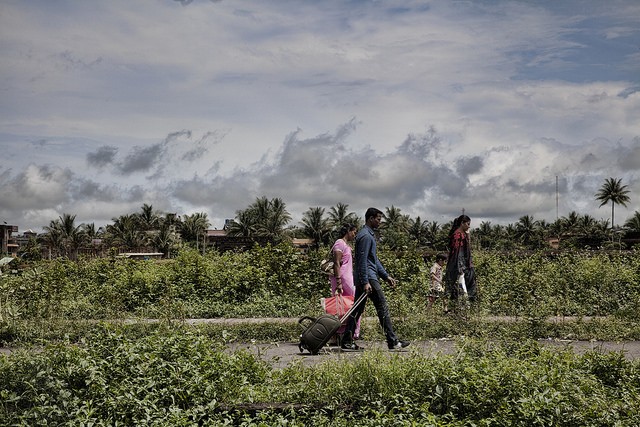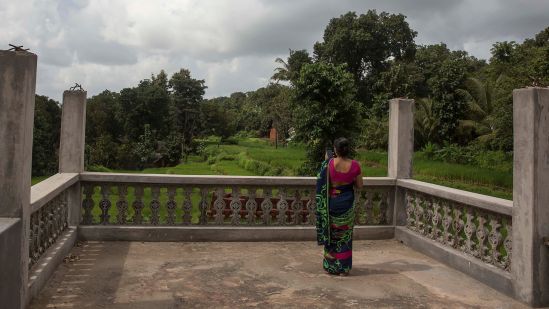Circulatory Urbanism: The misunderstood paradigm

Circulatory Urbanism: The misunderstood paradigm
One of the most visible differences between India and China’s economic growth – for which India appears to have lost a lot of ground already – is in the realm of urbanisation. China has sprouted gigantic metropolises in less than a generation. In some cases even entire cycles of urban growth and post-industrial decay have occurred, with subsequent processes of memorialising via art biennales and regeneration via new investment or redevelopment. All this while India chugs along with cities that still draw on exhausted colonial energy and struggle with substandard facilities, basic infrastructure and quality of life.
In a desperate attempt to catch up with China, the Indian government is projecting a programme to build 100 or so “smart cities” with the help of global capital and American consultants. This is just the latest over-reaction to the misleading assertion that India is still 70 percent rural.
Anyone looking at the history of development strategies in India may notice a pendular shift from a (Gandhian-Nehruvian) prioritisation of rural districts as primary sites of investment, to a blind faith in urbanisation as the most virtuous of all causes. For the past twenty or thirty years, the government has been trying hard to turn obsolete colonial cities such as Mumbai, Bangalore, Delhi and Calcutta into roaring “engines of growth”, complete with new airports, flyovers, monorails, sealinks, skywalks and so on.
However, even at times when the rural/urban policy spectrum gets drastically tilted to one side or the other, something has always stopped successive governments from falling into a totalising approach in either direction, as far as development strategies on the ground are concerned.
Today the “smart city” agenda (masterplanned high-tech cities that attract global investment) in conjunction with the government’s continued pledge to support the “Indian farmer” are reflections of the double-edged agenda it continues to work with. But whether it shoots left (rural) or right (urban) the government seems always to miss its target.
This is because the target is – quite literally – a moving one. It is a “smart” target that has not waited for “smart city” protocols. If urban growth is primarily about attracting investments, skills and labour, what has happened over the decades is the emergence of a large urban field spanning across the entire Indian subcontinent. This has been accompanied by a constant movement of people with growing multiplicity of roles and functions.
The government keeps missing its target because it still insists that the farmer be a farmer – and not for instance, a farmer/builder/Uber driver, and that a village be a village – and not a networked processing hub, yet both are more accurate descriptions of what is actually happening on the ground.
How should we make sense of the latest census that shows that the biggest growth in urbanisation is not taking place in the megalopolises but in small towns? And that these small towns are deeply entrenched in rural hinterlands whose elite – landowners and rich farmers – produce surplus agricultural products but also construction products like baked bricks or quarried stone – that gets invested in fast-growing urban hubs? What about the fact that the migratory flows from rural to rural areas are quite significant in India as rural sites also generate employment? And how do we categorise the increasing number of young professionals who prefer to commute daily, weekly, or monthly from their village to the closest business hub, rather than moving with their families and settling in the city?
There is strong reason to believe that rather than the country being divided on rural/urban lines – it really should be considered as a series of networks of habitats – towns, cities and villages that are connected via railway tracks and roads and inhabited by highly mobile populations of traders, labourers, students, pilgrims and others. These have always been shaping the way in which local and regional markets emerge and expand connecting villages and urban hubs in very dynamic ways.
What is then seen is a form of urbanisation that is on the move, even as its inhabitants remain anchored in primordial/traditional notions of the “home” and ancestral identities.
If global capital hotspots like London and New York are yoked to each other through high-tech communication and financial systems – local capital has its own flows and movements, which connect cities, towns and villages to each other. In India for sure, the local is not and has never been static and contained.
Users of the railways – as Mariam Aguiar points out in her chronicle Tracking Modernity about the Indian train system – managed to transform the colonial agenda of linear mobility that the railways initially worked with, and made it totally their own, pressuring the government to expand it in different directions to fulfill their multiple needs. Similarly Indian urban users have produced their own cities – against the emerging skylines one sees in glass and concrete. These invisible, circulatory cities exist, not as an unseen force field or energy systems, but in actual physical places – with the emphasis being on the plural of “place”. Most Indian families and communities, even among the poorest, use their families as vehicles of mobility spreading households across the sub-continent, using one to support and subsidise the other.
Theorists often get lost in the physical forms these dwellers inhabit, creating frameworks for the ephemeral or the informal since they really are not officially recognised or accepted. In reality these are places that move along the movement of their users. They are invisible to us – not because they are magical or temporary – but only because we have already placed the city within a constrained spatial paradigm.
The Chinese are adept at producing magnificent urban artefacts, and many of their cities are held up as representing everything that is global and contemporary. Their alleged success in the matter can be attributed, besides their efficiency, to their ability to restrict and control the movements of their national workforce, which is also heavily dependent on migratory flows of workers. Glorious Chinese cities are based on precisely the opposite mechanism that keeps Indian urbanity alive.
The urban paradigm to which India belongs has not yet been understood because it is so dialectally opposed to preconceived and conventional notions of what urbanisation should be. India’s smart urbanity doesn’t need to be masterplanned – it already exists, but we have yet to fully recognise and understand it.
This article by Rahul Srivastava and Matias Echanove and accompanying photographs taken on the Konkan Coast by Ishan Tankha are part of a study by the Institute of Urbanology funded by the Mobile Lives Forum, a research institute created by SNCF to prepare for mobility transitions. It was first published in Uncube magazine.
